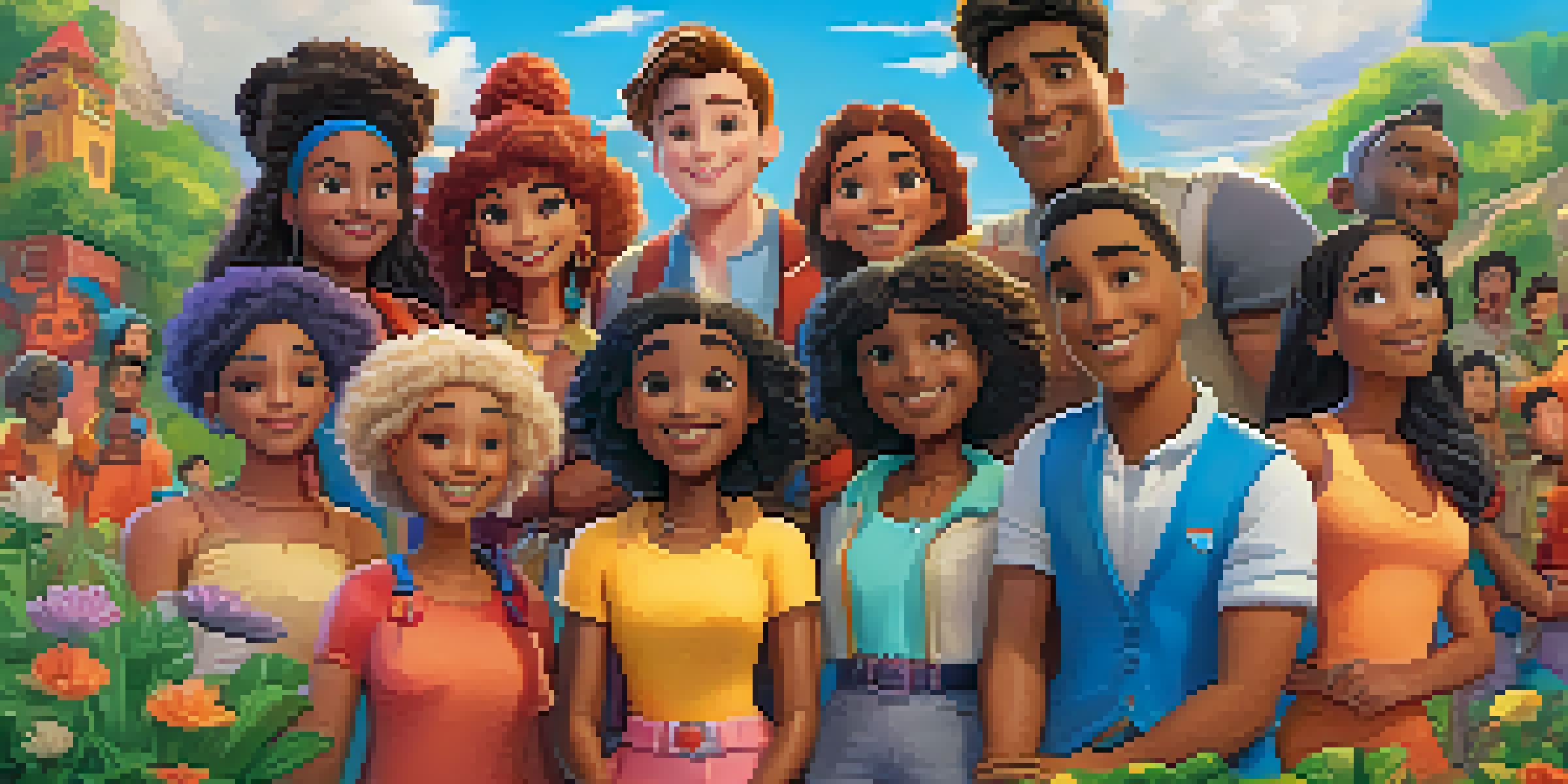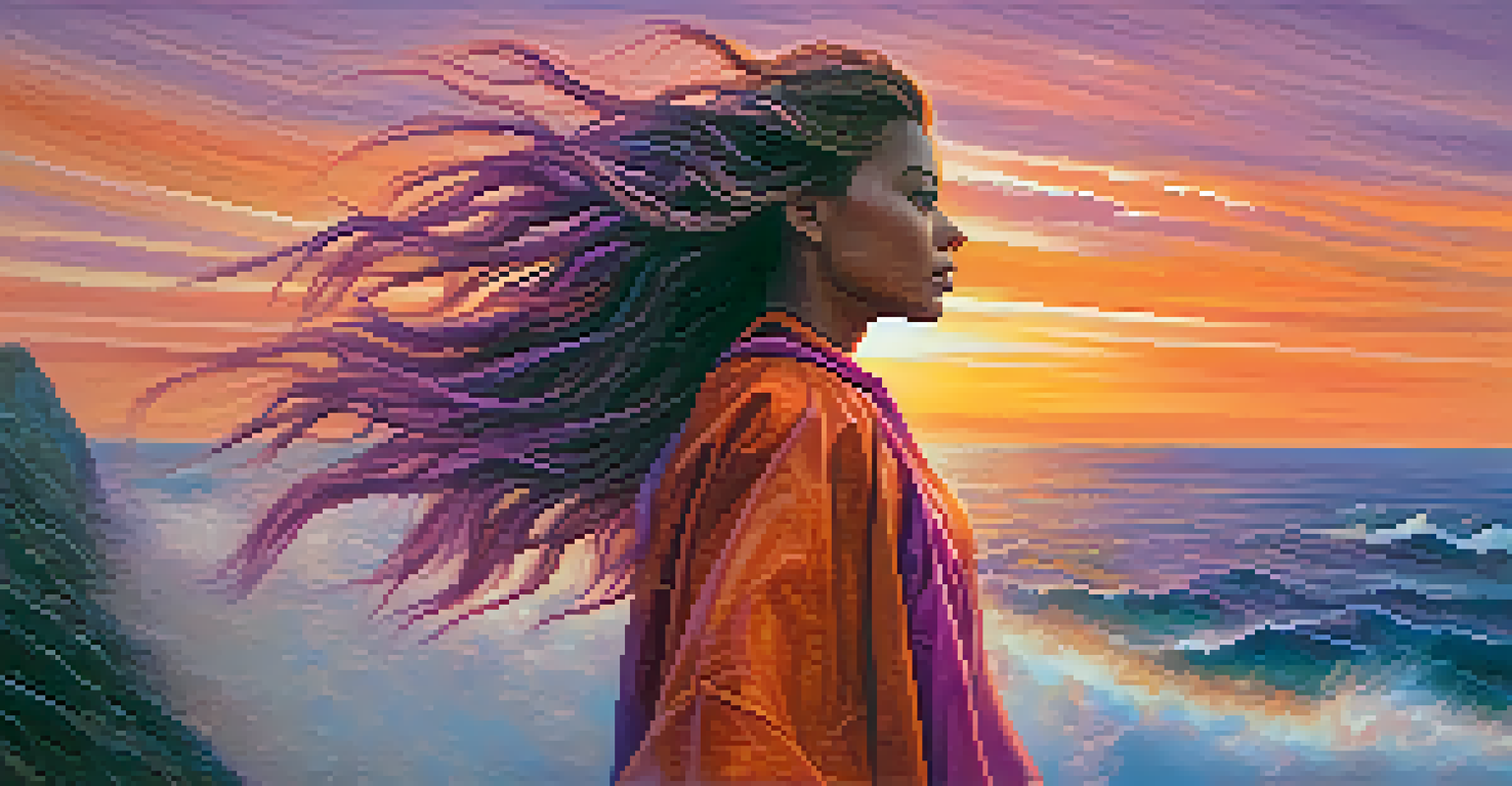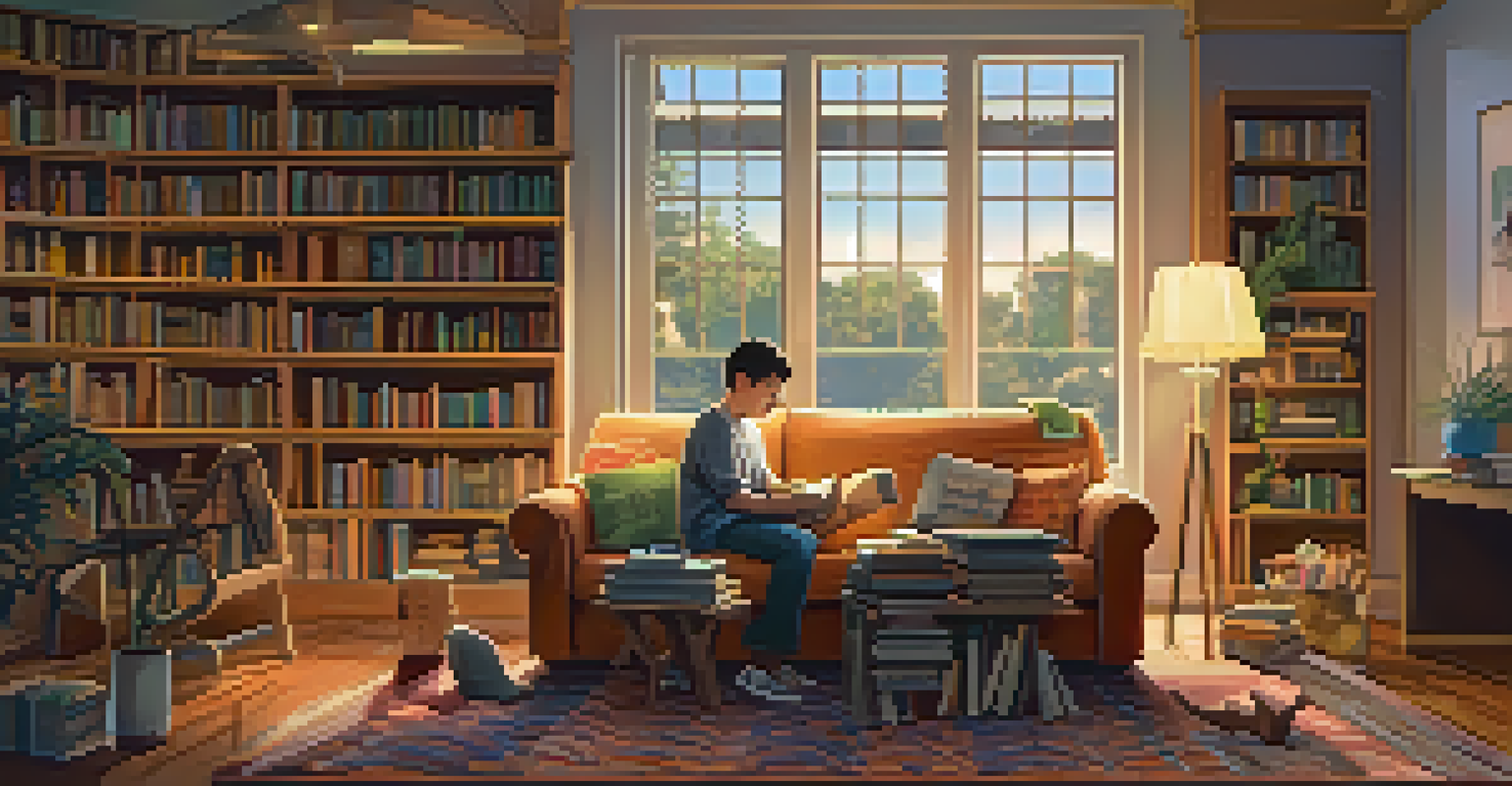Gender Representation in Animated Films: A Critical Analysis

Understanding Gender Representation in Animation
Gender representation in animated films refers to how characters of different genders are portrayed. This encompasses their roles, behaviors, and how they are perceived by audiences. Animated films have historically reflected societal norms, influencing how gender roles are understood by children and adults alike.
Animation can have an enormous impact on how children view themselves and the world around them, often shaping their understanding of gender roles.
In many classic animated films, female characters were often relegated to secondary roles, serving primarily as love interests or damsels in distress. In contrast, male characters usually took center stage, showcasing strength and heroism. This imbalance sets a precedent that can shape viewer expectations and perceptions about gender roles.
However, contemporary animated films are beginning to challenge these stereotypes, presenting more nuanced and diverse characters. By doing so, they contribute to a broader understanding of gender and encourage discussions about equality and representation in media.
The Evolution of Female Characters in Animation
Female characters in animated films have undergone significant transformation over the decades. Early animations often portrayed them as passive and dependent, reinforcing traditional gender roles. Disney's early princesses, for example, were often characterized by their beauty and need for rescue, which limited their agency.

In recent years, we've seen a shift towards stronger, more independent female leads. Characters like Moana from Disney's 'Moana' and Elsa from 'Frozen' showcase women who are not only capable but also complex and relatable. They embark on their own journeys, reflecting a modern understanding of female empowerment.
Evolution of Female Characters
Female characters in animation have evolved from passive roles to strong, independent leads who reflect modern ideals of empowerment.
This evolution is crucial as it not only provides young viewers with relatable role models but also encourages a rethinking of what it means to be a woman in today's society. The stories are now more inclusive, celebrating traits like bravery and intelligence rather than just beauty.
The Role of Male Characters in Animated Films
While much attention is given to female representation, the portrayal of male characters also warrants scrutiny. Traditionally, male characters in animated films were depicted as strong, assertive, and often emotionally stoic. This portrayal can reinforce harmful stereotypes about masculinity, suggesting that vulnerability is a weakness.
The stories we tell and the characters we create reflect our values and beliefs, influencing societal perceptions of gender and identity.
However, recent animated films have begun to challenge these norms by showcasing more emotionally complex male characters. For instance, the character of Kristoff in 'Frozen' demonstrates sensitivity and a nurturing side, breaking away from the typical 'tough guy' trope. This not only makes male characters more relatable but also promotes a healthier view of masculinity.
By presenting male characters with depth and emotional range, these films encourage boys and men to embrace their feelings, fostering a more balanced understanding of gender identity. This is a crucial step in promoting equality and dismantling outdated gender norms.
Cultural Influences on Gender Representation
Cultural backgrounds play a significant role in shaping how gender is represented in animated films. Different societies have unique perspectives on gender roles, which can influence animation styles and storytelling. For example, Japanese anime often portrays gender in ways that reflect both traditional and modern societal values.
Films like 'Spirited Away' offer characters that defy typical gender norms, showcasing girls who are resourceful and resilient. Conversely, other cultures may emphasize more traditional roles, which can perpetuate stereotypes. Understanding these cultural influences helps us appreciate the diversity and complexity of gender representation across different animations.
Challenging Male Stereotypes
Recent films depict male characters with emotional depth, promoting a healthier understanding of masculinity and breaking traditional norms.
As globalization increases, cross-cultural influences can either challenge or reinforce existing stereotypes. Animated films have the potential to create a dialogue about gender roles that transcends cultural boundaries, promoting a more inclusive understanding of representation.
The Impact of Audience Reception on Gender Representation
Audience reception plays a pivotal role in shaping the narratives and characters we see in animated films. Viewers' preferences and reactions can influence filmmakers' decisions, pushing them to create stories that resonate more with contemporary audiences. This feedback loop can lead to more diverse representations of gender in future films.
For instance, the overwhelming popularity of films like 'Wonder Woman' and 'Frozen' has encouraged studios to invest in projects that feature strong female leads. When audiences demand more varied and authentic representations, filmmakers are more likely to respond positively. This demonstrates the power of consumer choice in driving change.
Moreover, social media has amplified this audience feedback, allowing for real-time conversations about gender representation. As viewers voice their opinions and advocate for greater diversity, it becomes increasingly important for filmmakers to listen and adapt, fostering a more inclusive cinematic landscape.
The Importance of Intersectionality in Representation
Intersectionality is the concept that various social identities, such as race, gender, and class, intersect to shape individual experiences. In the context of animated films, it's essential to consider how these intersecting identities influence character representation. By focusing solely on gender, we may overlook the nuances that come from other aspects of identity.
Films like 'Coco' and 'Raya and the Last Dragon' highlight the importance of intersectionality by featuring characters who navigate multiple identities. These stories emphasize that gender representation is not a one-size-fits-all approach; different experiences must be acknowledged and celebrated. This enriches the narrative and provides a more authentic reflection of society.
Intersectionality in Representation
Animated films increasingly highlight intersectionality, acknowledging how various identities shape experiences and enriching character narratives.
Addressing intersectionality in animation not only fosters inclusivity but also allows for a deeper exploration of character development. When characters embody diverse identities, they resonate with wider audiences, promoting empathy and understanding through their stories.
Future Trends in Gender Representation in Animation
As society evolves, so too does the landscape of animated films, particularly regarding gender representation. Upcoming trends suggest a move toward more inclusive storytelling, where characters of all genders are portrayed with depth and complexity. Filmmakers are increasingly recognizing the need for diverse voices and experiences in their narratives.
Additionally, as technology advances, animation techniques allow for more creative expression, enabling filmmakers to push the boundaries of traditional storytelling. This evolution can lead to innovative portrayals of gender that reflect contemporary issues and challenges. For example, addressing themes like mental health and gender fluidity is becoming more common in animated narratives.

Ultimately, the future of gender representation in animation looks promising. With growing awareness and advocacy for diversity, animated films have the potential to shape societal perceptions of gender in meaningful ways, paving the way for a more equitable and inclusive future.